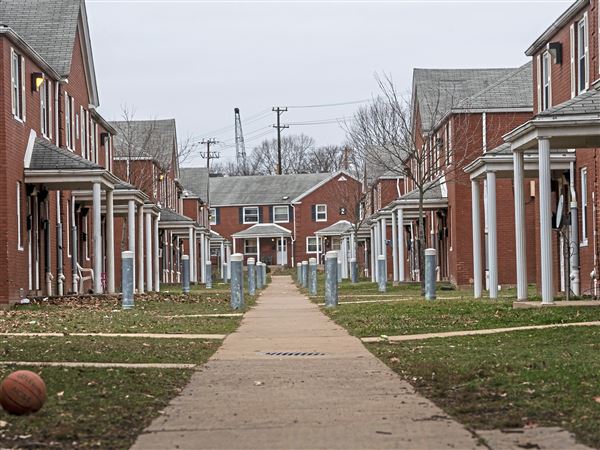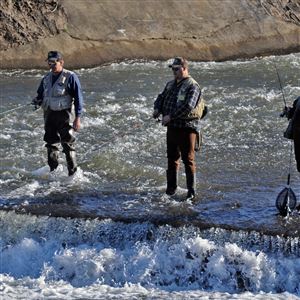The U.S. Environmental Protection Agency has taken the unusual step of withdrawing its February approval of a 7,300-foot-deep injection well being drilled to permanently store shale gas drilling waste water near DuBois, Clearfield County.
Facing widespread public concerns that the Windfall Oil & Gas Inc. Zelman No. 1 injection well could trigger earthquakes and cause groundwater contamination, the EPA last week said it had asked its Environmental Appeal Board to grant a "voluntary remand" of the five-year permit.
David Sternberg, an EPA spokesman, issued a statement saying the remand request was made to allow the agency to "further consider public comments" and "assure that the substantive and procedural requirements of the federal regulations have been met."
He said the agency, after reconsidering the public comments, could decide to reissue the permit under the same or similar conditions, draft a new permit that would require a new public comment period or deny the permit.
Fifty-seven petitions appealing the EPA Class II injection well permit approval had been filed with the agency's Environmental Appeal Board, including those from the Clearfield County commissioners, the City of Dubois, Sandy Township, and Brady Township, where the well would be located.
Michael Hoover, president of Windfall, declined comment because he said he hasn't had an opportunity to speak with the EPA about the company's options. He previously has said the proposed well would safely inject the drilling waste water into the porous Oriskany Sandstone, a depleted natural gas reservoir that was tapped by drillers from the 1940s through the 1970s.
Under the remanded federal permit, the well was limited to taking 1,000 barrels of drilling waste water a day or 30,000 barrels a month.
In Pennsylvania, there are approximately 9,000 shale gas wells, and the drilling industry uses approximately 4 million gallons of water, mixed with a proprietary menu of chemicals and sand, to hydraulically fracture or "frack" a single well. Some percentage of that water, which can pick up contaminants and radiation from the shale, returns to the surface where it is collected by drillers for reuse or disposal.
Some of the waste water they produce is sent to specialized water treatment plants, but most is trucked to Ohio or West Virginia for disposal in injection wells there.
The rare agency remand was hailed as a positive step by opponents, who claim the EPA failed to properly review seismic concerns they raised about two faults that run through the area, as required by the federal Safe Drinking Water Act. Waste water injection wells near Youngstown, Ohio, were blamed for a series of small earthquakes in December 2011.
Opponents also said the company and EPA failed to identify 15 of the 18 private drinking water wells located within a quarter mile radius of the injection well as required by permitting regulations.
"Our water well is just 900 feet from the proposed [injection] well, within the quarter-mile radius where they say the pressure it generates might be high enough to cause our well to be contaminated," said Richard Atkinson, one of those who appealed the permit. "Now, with this remand, we're in a state of limbo. The next move is up to the EPA."
Marianne Atkinson said that if the EPA grants Windfall a new permit it should require the company to test the waste water it accepts and make public the chemicals it contains.
"It's in our interest to know what chemicals are in the waste water," she said. "We need to know so we can do preliminary tests and then know when those chemicals show up in our drinking water."
Emily Collins, an attorney who is representing the Atkinsons and raised the issue of the EPA not following Safe Drinking Water Act provisions in their appeal, said the agency seems to be admitting it made some procedural errors.
"With the remand it looks like the EPA did not properly address all of the comments, and we'd like to think that some of the appeal petition we filed was persuasive," Ms. Collins said.
There are approximately 144,000 Class II wells permitted by the EPA in the U.S. Most are used to stimulate nearby oil or gas well production, but about 30,000 are used to dispose of the more than 2 billion gallons of brine and drilling wastewater produced by oil and gas well drillers each day.
There are 10 federally permitted waste-water injection wells in Pennsylvania. By comparison, West Virginia has 65 deep disposal wells.
Seven of the Pennsylvania disposal wells are in operation. In addition to the Windfall well in Clearfield County, the Seneca Resources Corp. well in Elk County also has been appealed to the federal Environmental Appeals Board.
An EPA permit for the Pennsylvania General Energy Co. disposal well in Indiana County has been issued but remains subject to appeal, the agency said.
First Published: May 19, 2014, 3:58 a.m.
















